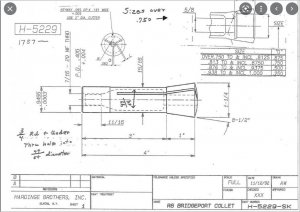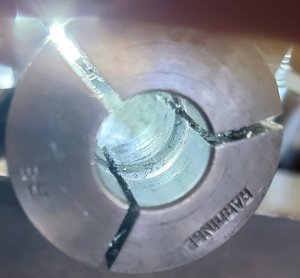In preparation to start working on some vise clamps, I grabbed an old half inch R8 collet and a half inch end mill. The collet is part of an assortment of used Collets that came with my mill. I put the end mill into the collet and immediately noticed that there is a small internal shoulder. The bit slips in easily for about 5/8 of an inch. With a little bit more force it can be inserted till it hits the drawbar threads.
I'm assuming the shoulder should not be there.
But I'll be darned if I can figure out how it got there.
I'd also like to try and fix it. But it isn't a soft collet so I'm guessing it will probably have to be ground. It's either that or pitch it.
Any thoughts?
I'm assuming the shoulder should not be there.
But I'll be darned if I can figure out how it got there.
I'd also like to try and fix it. But it isn't a soft collet so I'm guessing it will probably have to be ground. It's either that or pitch it.
Any thoughts?



